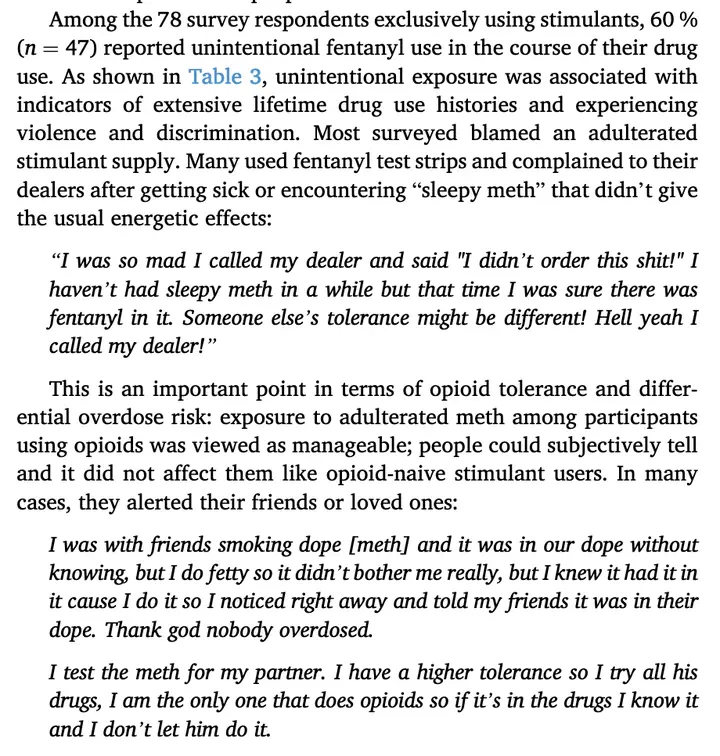The Emergence of Fentanyl in a Stimulant Landscape: Un/Intentional Use, Social Relations, and Developing Communities of Care

Abstract
Background The introduction of fentanyl into the unregulated drug supply has drastically altered drug landscapes across the United States and increasingly contributed to overdose. As part of a larger study about opioid overdose, we assessed how the emergence of fentanyl has shaped health outcomes and social relations in an underserved region of California. Methods From 2022–2024, we engaged in ethnographic fieldwork, surveys, and qualitative interviews with people 18+ years old and reporting opioid or stimulant use in the prior three months. We generated descriptive statistics and examined un/intentional fentanyl use among people using opioids (regardless of stimulant use) compared to those exclusively using stimulants. Qualitative interviews were thematically coded to lend insight into the social contexts of fentanyl use. Results Of 195 survey participants, 31 % were women, and 60 % identified as racialized groups, with an average age of 43; the qualitative sub-sample (n = 53 interviews) was similar. People using opioids were often initially unintentionally exposed to fentanyl through the heroin supply or prescription pills, but shifted to intentional use. People using stimulants attributed unintentional fentanyl use to adulterated methamphetamine, mistaking fentanyl for other drugs, and sharing smoking tools. Socially, fentanyl heightened overdose risk and fueled community stigma, while paradoxically instantiating forms of community care (i.e., overdose response, warning those experimenting with fentanyl). Conclusion Our research calls for evidence-based education about fentanyl, expanded access to harm reduction services, including community drug checking and safer smoking supplies, and low-barrier drug treatment as part of broader efforts to promote community care.